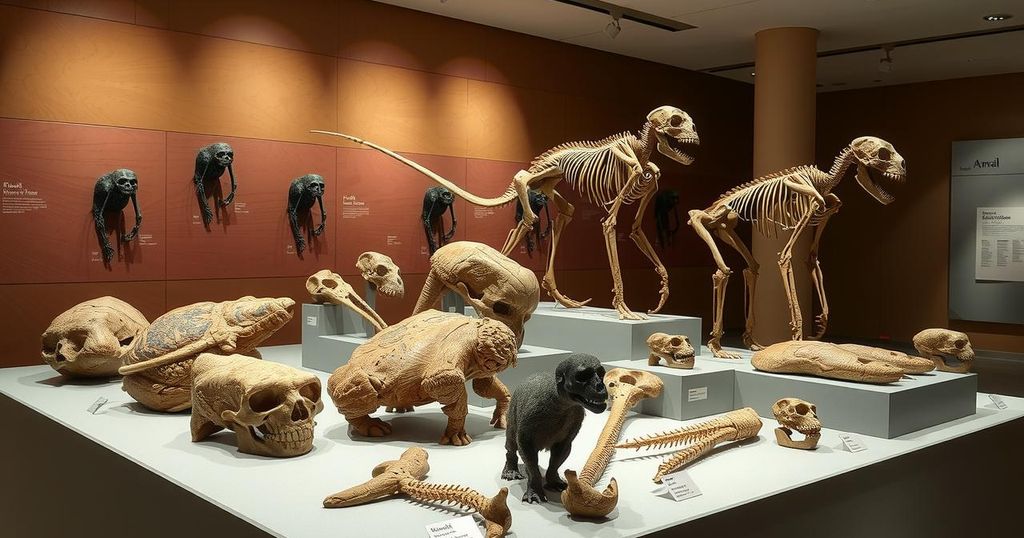Science
BAL HARBOUR, COLLABORATORS, CONSTRUCTION, CUBA, DEPARTMENT OF MARINE GEOSCIENCES, EARTH AND SPACE SCIENCE, EDUCATION, ENVIRONMENTAL IMPACT, FA, FALK AMELUNG, FAR, FARZANEH AZIZ ZANJANI, FLORIDA, GERMAN SPACE AGENCY, MIAMI, MIAMI BEACH, NORTH AMERICA, SCIENCE, SOUTH FLORIDA, SPACE EXPLORATION, SUNNY ISLES BEACH, SURFSIDE, UNITED STATES
Rajesh Choudhury
0 Comments
Study Reveals Ongoing Coastal Subsidence Threat Across South Florida
A study from the University of Miami reveals that 35 buildings from Miami Beach to Sunny Isles Beach are experiencing subsidence, sinking between 2 to 8 centimeters. Using satellite technology, the researchers identified ongoing sinking trends and associated factors. The study highlights the need for continued monitoring and raises safety concerns for coastal high-rises.
Researchers at the University of Miami’s Rosenstiel School of Marine, Atmospheric, and Earth Science have unveiled alarming findings about subsidence— a phenomenon where ground sinks—affecting 35 buildings from Miami Beach to Sunny Isles Beach. This study, covering the period from 2016 to 2023, reports sinking ranging from two to eight centimeters, with the most pronounced effects seen in Sunny Isles Beach and, to a slightly lesser extent, Surfside.
The published research, hitting the academic circuit on December 13, 2024, in the Earth and Space Science journal, relied on satellite technology known as Interferometric Synthetic Aperture Radar (InSAR). By analyzing a whopping 222 radar images from the European Sentinel-1 satellites, researchers constructed a timeline of ground movement. The method employs reference points like balconies and rooftops, which act as mirrors to satellite radar signals. These high-flying satellites, cruising at 700 kilometers, can capture tiny land shifts, even as subtle as millimeters.
It’s common knowledge that newly constructed high-rises may settle up to several tens of centimeters initially, but the findings here take a twist—subsidence appears to be a persistent issue. “We found that subsidence in most high-rises slows down over time, but in some cases, it continues at a steady rate,” noted Falk Amelung, the senior author and geophysics professor at the Rosenstiel School. This suggests that sinking could stick around longer than expected.
Unexpectedly, the researchers stumbled upon significant subsidence hotspots along South Florida’s coastline. This revelation came from lead author Farzaneh Aziz Zanjani, emphasizing the importance of continuous monitoring and a deeper dive into how this affects buildings in the long haul. To bolster their findings, the team collaborated with experts from other institutions who verified their results using independent data from Germany’s TerraSAR-X satellite.
So, what’s driving this subsidence? Well, Miami’s underlying layers consist of limestone laced with sandy strata. The team theorizes that the weight of the high-rises along with construction vibrations may trigger shifting within those sandy layers. Daily tidal flows and cracks in underlying limestone could also play a role, creating a sort of land settling that’s hard to shake off. Khaled Sobhan, a geotechnical engineering professor at Florida Atlantic University, points out,”There are likely additional factors”— like groundwater flow—“causing the grain re-arrangements” and ongoing sinking.
As if things couldn’t get grimmer, preliminary data shows that Broward and Palm Beach areas might also be experiencing subsidence, a possibility that could be linked to South Florida’s geological makeup—ancient shore currents that deposited quartz sands forming those sandy layers within the limestone.
This investigation even touched on the infamous Champlain Towers South disaster, which killed 98 people when it collapsed in 2021. Interestingly, there were no signs of subsidence detected prior to the fateful day, contradicting expectations given surrounding construction activities. Antonio Nanni, a co-author from the University of Miami, stated, “This study is a game changer” regarding monitoring ground stability in coastal high-rises, which could enhance safety protocols. The need for transparency is key: establishing comprehensive public databases, much like those in Europe, could help residents keep tabs on their buildings’ stability.
A central concern going forward is differential settlement—the uneven sinking of parts of a structure—which could lead to severe damage. Although evidence of this has emerged, the team requires further studies to understand the full scope of the issue. With excitement tapped into more research possibilities, they hope funding will pour in, allowing them to explore sediment cores and the interplay of freshwater with limestone, perhaps revealing more mysteries about these southern grounds.
The study conducted by researchers at the University of Miami reveals that subsidence is impacting a substantial number of buildings along the Miami coastline, raising serious concerns about infrastructure stability. Employing advanced satellite techniques has provided valuable insights into this ongoing issue, yet it also highlights the urgent need for continued monitoring and research. As potential factors contributing to subsidence are examined, the implications for safety and structural integrity in the region become more pressing. It seems that understanding this phenomenon could very well be a game changer for residents and policymakers alike.
Original Source: news.miami.edu




Post Comment